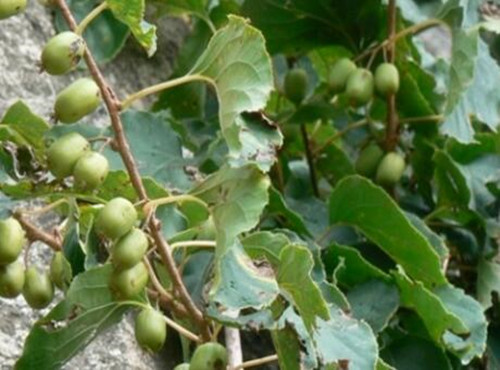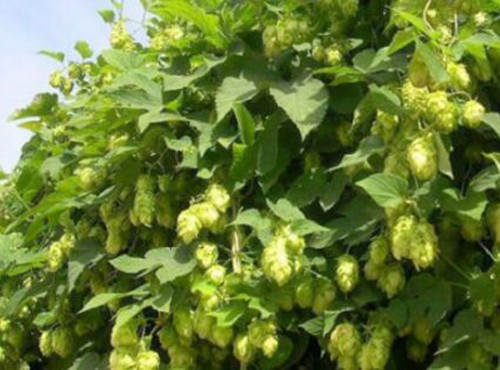How much is trifoliate akebia market price? How many months does it usually bear fruit? What are the planting prospects?
Akebia trifoliata is distributed in Hebei, Shanxi, Shandong, Henan, southern Shaanxi, southeastern Gansu and various provinces and regions of the Yangtze River Basin. So what is the market price of Akebia trifoliata? In what month does it usually blossom and bear fruit? What are the planting prospects? The details are as follows:

Akebia trifoliata usually blossoms from April to May and bears fruit from July to August.
The price of Akebia trifoliata
Akebia trifoliata, a wild vine fruit tree of the Akebia trifoliata family, is commonly known as September fried melon and August melon. It is an important medicinal plant, and its roots, vines, fruits and seeds can be used as medicine. Native to China and Japan, China is distributed in the south of Shandong, Hebei and Shanxi. Henan is produced in Taihang Mountain, Funiu Mountain, Dabie Mountain and Tongbai Mountain. It grows in areas ranging from 250m to 2500 m above sea level and grows mostly in sparse forests or hilly thickets on the edge of mountains and valleys. The woody stem of Akebia trifoliata of the family Akebia trifoliata. Deciduous wood in form. The ecological environment is born in the thickets of low mountains and hills or on the edge of the forest or by the side of the road.
Here are some prices of Akebia trifoliata for reference:
Natural kidney-tonifying medicinal fruit, supply sweet and nutritious August melon, Akebia trifoliata fruit wholesale in bulk: 12.00 yuan.
Supply August melon, August melon seedlings, the most sought after Aristolochia mandshurica fruit: 4.50 yuan.
A new green anti-cancer medicine and food fruit-Akebia trifoliata (Chinese kidney fruit): 5.00 yuan.
Supply domestic first wild rare fruit Akebia trifoliata domestication cultivation improved seedlings (multi-seed type): 15.00 yuan.
The above listed five prices of Akebia trifoliata, from which we can see that the price of Akebia trifoliata is very low, which is affordable to almost everyone. This is another feature of traditional Chinese medicine, the price is low, do not add any processing fees, naturally natural. Most of the production process of traditional Chinese medicine is only as simple as digging, drying and suffering, and there is no complex processing process of western medicine, so it is more popular to see traditional Chinese medicine to treat diseases. Just take traditional Chinese medicine to pay more attention to perseverance, adhere to long-term use. Therefore, it is suggested that people who are taking traditional Chinese medicine must adhere to it in order to give full play to the real role of Chinese herbal medicine.
What are the planting prospects of Akebia trifoliata
Akebia trifoliata fruit, root, stem and seed can be used in medicine, especially the fruit, which has the effect of cosmetology and anti-cancer. The prospects are bright.
Cases of getting rich
Have you ever seen Akebia trifoliata which costs 25 yuan per jin?
A variety of autumn fruits have been on the market, enriching the choice of citizens. This year, the reporter found that, in addition to oranges, persimmons and other common autumn fruits in previous years, a kind of fruit with a blue skin and a somewhat curved appearance, which looks like large eggplant, also appeared in the fruit shop on the street, and the price was about 25 yuan per jin.
When the fruit is ripe, the outer skin will crack like a durian, revealing a banana-like white flesh inside. Digging up the pulp with a spoon for tasting is somewhat sticky, sweet and full-bodied, and somewhat like a banana.
It is understood that this kind of fruit is the fruit of Akebia trifoliata, which is called fried in August and August melon because of its ripening and cracking in the eighth lunar calendar. It is distributed in the north and south provinces of our country, especially in the Yangtze River basin.
In Xianju, there is also wild Akebia trifoliata on the mountain, which is called "knife shell" by the locals. As a medicinal material, the roots, branches and leaves of Akebia trifoliata can be used as medicine, with the effect of invigorating qi and activating blood circulation, anti-inflammation and diuresis.
In recent years, in addition to the medicinal value, the edible function of Akebia trifoliata fruit has also been paid attention to by the world. It is understood that through wild domestication and artificial cultivation, the agricultural departments of Hunan, Jiangxi and Shaoxing in Zhejiang have domesticated Akebia trifoliata into an organic fruit with high nutritional value and formed related industries. According to relevant news reports, the price of Akebia trifoliata fruit is not low in various places, with a price of more than ten yuan to more than twenty yuan per jin.
In the past two years, growers in our city have also paid attention to the market value of this fruit and introduced it into Taizhou. Akebia trifoliata in some fruit stores in our city this year is from Xianju good fruit breeding professional cooperative.
Yu Haihai, head of Xianju good Fruit breeding Professional Cooperative, told reporters that the cooperative was introduced from Shaoxing four years ago and has now developed more than 100 mu.
"Last year, Trifolium trifoliate Akebia trifoliata on the base began to hang fruit, but the output was not much. This year, the fruit hanging rate has reached 90%." Yu Haihai said that the fruit went on the market around September 10 this year, and the ripening period lasted about 40 days. Combined, the output of large and small fruits is expected to reach 100000 jin.
"at present, this kind of fruit is still in the promotion period in Taizhou. at first, customers do not know it, nor do they know its medicinal value, but after buying and tasting it, there are more repeat customers." Yu Haihai said that after the fruit is on the market, it will be supplied to chain fruit stores and sold to Jiaojiang, Luqiao and even Hangzhou. The price of large fruit weighing more than half a jin is 30 yuan per jin, and the price of medium fruit is 20-25 yuan per jin.
Yu Haihai also told reporters that in order to further tap the value of fruits, the cooperative also developed the seeds and peels of Akebia trifoliata, and developed products such as Akebia trifoliata tea and Akebia trifoliata oil.
Time: 2019-03-20 Click:
- Prev

What does the national first-level key protected wild plant rattan jujube look like? How to plant it? What are the effects and effects?
Rattan jujube, endangered species. Also known as bitter jujube, woody vine. There is only sporadic distribution in the narrow range of Jinghong in Xishuangbanna, which was born at the edge of the seasonal rainforest in the valley of 620 meters above sea level. This is the only genus and species in China. So, what does rattan jujube look like? How to plant it? What are the effects and effects? What does rattan jujube look like?
- Next

How much is hops per jin in Moraceae? How to plant it? What are the effects and effects?
Hop is a perennial climbing herb of Moraceae and Rabdosia, with dense tomentose stems, branches and petioles and barbed thorns. Native to Europe, America and Asia. It is distributed in China and northern Sichuan, and is cultivated in all parts of China. So, how much is hops per jin? How to plant it? What are the effects and effects? It is understood that
Related
- Fuxing push coffee new agricultural production and marketing class: lack of small-scale processing plants
- Jujube rice field leisure farm deep ploughing Yilan for five years to create a space for organic food and play
- Nongyu Farm-A trial of organic papaya for brave women with advanced technology
- Four points for attention in the prevention and control of diseases and insect pests of edible fungi
- How to add nutrient solution to Edible Fungi
- Is there any good way to control edible fungus mites?
- Open Inoculation Technology of Edible Fungi
- Is there any clever way to use fertilizer for edible fungus in winter?
- What agents are used to kill the pathogens of edible fungi in the mushroom shed?
- Rapid drying of Edible Fungi

